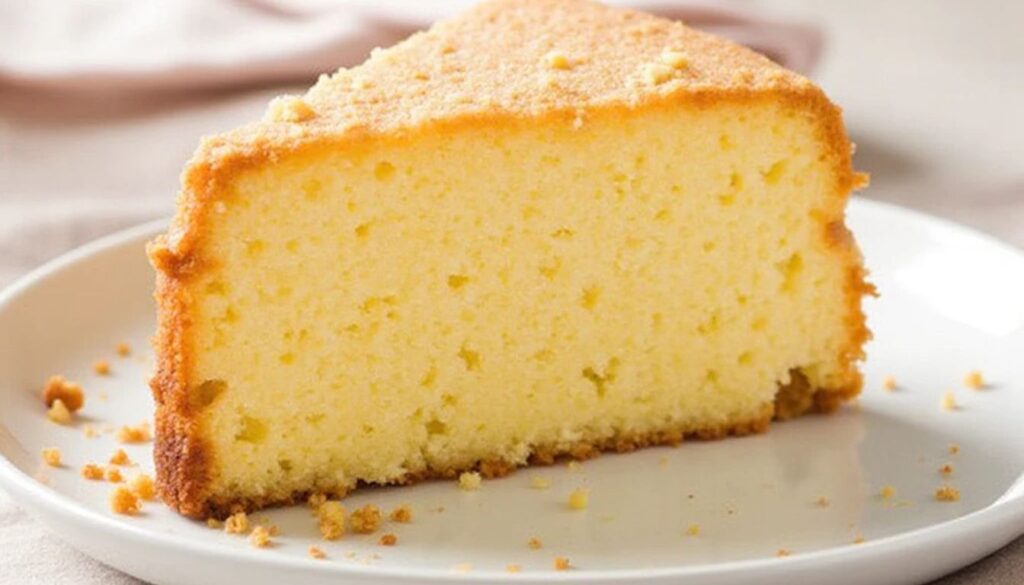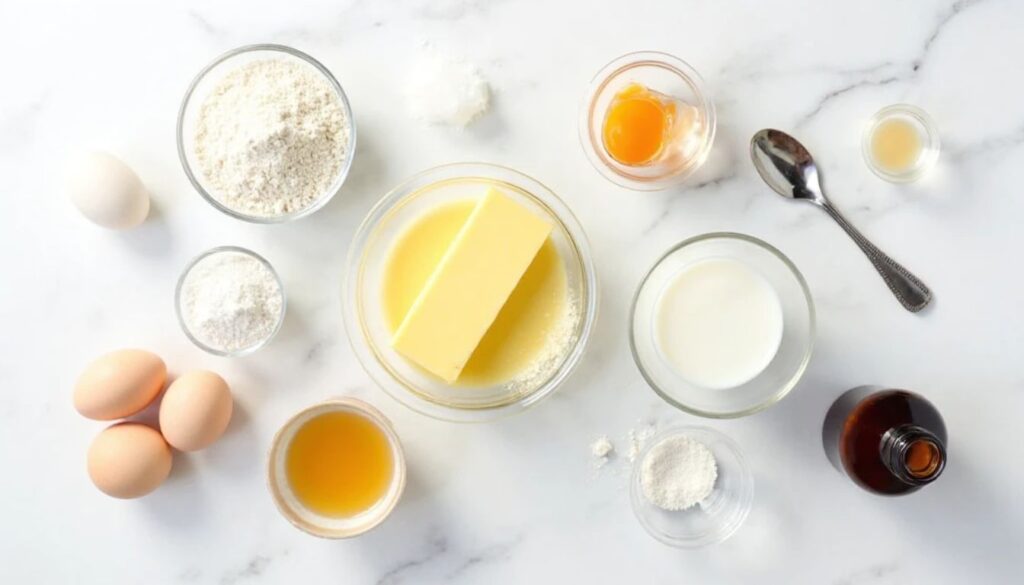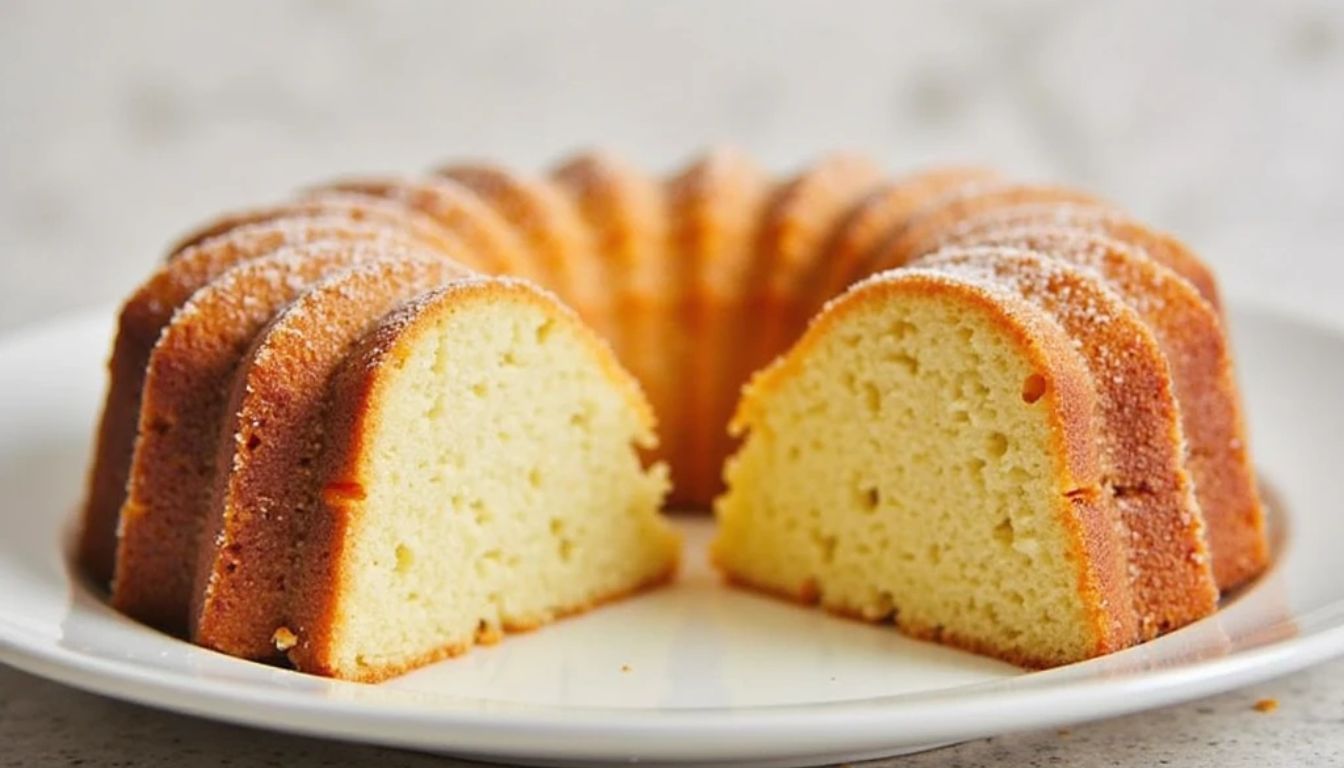Every time I take a golden butter cake out of the oven, memories of my grandmother’s kitchen come back. The smell of vanilla and butter fills the air, making me feel right at home. This homemade butter cake recipe is more than just baking. It’s about making moments that bring families closer together.
Making the perfect butter cake recipe might seem hard, but it’s actually easy. With just a few simple ingredients and some love, you can turn your kitchen into a bakery. You’ll make a treat that everyone will love.
This butter cake recipe is perfect for anyone, whether you’re new to baking or have lots of experience. Its rich buttery taste and soft texture make it perfect for any event. It’s great for casual family dinners or fancy dinner parties.
Table of Contents
Introduction to Classic Butter Cake
Butter cake is a timeless dessert that has been loved by home bakers for years. It shows us the beauty of classic baking, where simple ingredients create amazing flavors. Finding the best butter cake means understanding its special qualities.

The magic of butter cake is in its texture and taste. A great butter cake has a soft, tender crumb that feels like a cloud. It’s a dessert that goes beyond the usual.
What Makes a Perfect Butter Cake
To make the best butter cake, you need to focus on a few things:
- Exceptional butter quality
- Precise ingredient measurements
- Careful mixing techniques
- Perfect baking temperature
Brief History of Traditional Butter Cakes
Butter cakes come from European baking traditions. They started in France and England. They became popular in the 19th century when sugar and butter were easier to get for home cooks.
Why This Recipe Stands Out
Our traditional butter cake recipe is special because of its unique approach. We use specific techniques and high-quality ingredients. This creates a cake that always tastes amazing.
Essential Ingredients for Your Homemade Butter Cake

Making a moist butter cake starts with the right ingredients. Each one is key to the cake’s flavor and texture. Knowing what you need will help you make a dessert that’s a hit with everyone.
The base of a great butter cake is high-quality ingredients. You’ll need these main items:
- Unsalted butter – gives rich flavor and smooth texture
- Granulated sugar – adds sweetness and helps with caramelization
- Fresh eggs – bind ingredients and add structure
- All-purpose flour – makes the cake’s base
- Baking powder – ensures it rises right
- Vanilla extract – boosts the flavor
- Sour cream – makes the cake moist
Temperature is important when getting your ingredients ready. Butter and eggs at room temperature mix better. This makes your batter smooth and your cake tender.
Pro tip: Use fresh, high-quality ingredients. The difference between a good cake and an amazing one is often in the ingredients. Organic eggs, pure vanilla, and fresh dairy make your cake stand out.
When picking ingredients, choose fresh and high-quality ones. Your taste buds will appreciate the effort you put into using the best ingredients for your homemade butter cake.
Kitchen Equipment and Tools Needed
To make an easy butter cake, you need the right tools. Start by picking the best equipment for a tasty and fluffy cake.
Baking an easy butter cake is more than just ingredients. You also need the right tools. Good equipment can really improve your baking.
Must-Have Baking Tools
- 9-inch square baking pan
- Large mixing bowl
- Electric hand mixer or stand mixer
- Measuring cups and spoons
- Rubber spatula
- Wire cooling rack
Optional Equipment for Enhanced Results
These tools are not necessary but can make baking better:
- Digital kitchen scale
- Silicone baking mat
- Parchment paper
- Offset spatula
Pan Size and Type Recommendations
Choosing the right pan is key for your butter cake. A 9-inch square pan is best for even baking and perfect slices.
| Pan Type | Recommended for Butter Cake | Baking Performance |
|---|---|---|
| Square Metal Pan | Highly Recommended | Excellent heat distribution |
| Glass Baking Dish | Good Alternative | Slower, more even heating |
| Non-Stick Pan | Acceptable | Easy cake removal |
Pro tip: Always grease your pan well or use parchment paper. This prevents your cake from sticking.
Butter Cake Recipe: Step-by-Step Instructions
Making the perfect homemade butter cake needs precision and care. This recipe will help you through each step. You’ll get a delicious, moist dessert that will wow your family and friends.
First, get all your ingredients ready and preheat your oven to 330°F (165°C). Preparation is essential for a great homemade butter cake.
- Cream the butter and sugar: In a large mixing bowl, beat softened butter and sugar until light and fluffy. This takes about 3-4 minutes.
- Add eggs: Mix in eggs one at a time, making sure each is fully incorporated.
- Mix dry ingredients: In another bowl, mix flour, baking powder, and salt together.
- Alternate wet and dry ingredients: Add the flour mixture and sour cream to the butter mixture, mixing gently.
- Prepare the pan: Grease and flour a 9-inch cake pan well.
When pouring the batter into the pan, use a spatula to spread it evenly. Gently tap the pan on the counter to remove air bubbles.
Bake your butter cake for 45-50 minutes. Check if it’s done by inserting a toothpick into the center. It should come out clean with a few crumbs.
Let the cake cool in the pan for 10 minutes before moving it to a wire rack. This helps it set and makes it easier to remove.
Your homemade butter cake is now ready to enjoy! Its golden, tender crumb and rich butter flavor will make it a favorite in your baking.
Tips for Achieving the Perfect Texture
Making a moist butter cake needs precision and knowing key baking techniques. Success comes from mastering certain methods that turn simple ingredients into a tasty dessert. The best butter cake isn’t just about following a recipe—it’s about understanding the science behind texture and technique.
Getting that signature light and fluffy texture involves several key steps. Let’s look at the most important things to consider for your perfect butter cake.
Mastering Mixing Techniques
Proper mixing is key to your moist butter cake. Follow these essential guidelines:
- Cream butter and sugar until light and fluffy (about 3-5 minutes)
- Add eggs one at a time, beating thoroughly after each addition
- Whip the batter vigorously after adding eggs to incorporate air
- Fold dry ingredients gently to maintain the cake’s delicate structure
Temperature Considerations
Ingredient temperature is vital for the best butter cake. Keep these tips in mind:
- Use room temperature ingredients for smoother mixing
- Butter should be soft but not melted
- Eggs blend more easily at room temperature
- Preheat your oven to ensure consistent baking
Solving Texture Challenges
Even experienced bakers face texture issues. Here are solutions to common problems:
- Dense cake: Likely caused by overmixing or using cold ingredients
- Dry cake: Often results from overbaking or too much flour
- Uneven texture: Can be prevented by proper ingredient measurement
By understanding these techniques, you’ll be well on your way to creating a consistently delicious moist butter cake that impresses everyone at the table.
The Secret to a Moist and Fluffy Crumb
Making a moist butter cake is more than just a recipe. It’s about finding the right mix of ingredients and techniques. This turns a simple cake into a special treat.
Sour cream is a key player in making a moist cake. It adds moisture and a tangy flavor. Using sour cream in your recipe means your cake will be soft and tasty.
- Use room temperature ingredients for smoother mixing
- Measure ingredients precisely to maintain moisture balance
- Avoid overmixing the batter to prevent a tough texture
- Check cake doneness with a toothpick test
Temperature is important for a moist cake. Make sure butter and eggs are at room temperature. This helps mix the ingredients evenly, keeping the cake moist.
| Ingredient | Moisture Impact | Recommended Quantity |
|---|---|---|
| Sour Cream | High moisture content | 1/2 cup |
| Butter | Adds richness | 1 cup |
| Eggs | Binds moisture | 2-3 large eggs |
Creating a moist butter cake is an art. Focus on every step, from choosing ingredients to mixing. Your hard work will pay off with a cake that wows everyone.
Adding the Signature Crunchy Sugar Top
Turning your traditional butter cake into a showstopper is more than just mixing. The key is the crunchy sugar topping that makes it special.
The magic happens in the last minutes of baking. Sprinkling sugar on top creates a stunning contrast that makes each bite unforgettable.
Sugar Types for the Perfect Crackly Finish
Not all sugars work the same for that crunchy top. Here are the top picks:
- Granulated Sugar: The classic choice for a crisp, sparkling top
- Coarse Turbinado Sugar: Offers larger crystals for extra crunch
- Raw Cane Sugar: Adds a subtle caramel-like flavor
Application Methods for a Crackly Top
To get the ultimate crunch, follow these steps:
- Prepare your cake batter as usual
- Before baking, sprinkle sugar evenly across the top
- Use gentle, light movements to spread the sugar
- Bake at the recommended temperature
The outcome? A beautiful, crisp sugar crust that cracks beautifully when you slice into it. It’s both delicate and satisfyingly crunchy.
Storage and Serving Suggestions
Keeping your homemade butter cake fresh is key. It can stay delicious for a while if stored right.
Here are some tips to keep your cake in top shape:
- Store at room temperature in an airtight container
- Keep cake fresh for up to 4 days
- Protect from direct sunlight and heat sources
When it’s time to serve, try these tasty ideas:
- Serve slightly warm from the oven for maximum enjoyment
- Pair with fresh berries or whipped cream
- Dust with powdered sugar for an elegant touch
Don’t refrigerate your cake. If it gets dry, warm a slice in the microwave for 10-15 seconds.
| Storage Method | Duration | Recommended Conditions |
|---|---|---|
| Room Temperature | Up to 4 days | Airtight container |
| Refrigeration | Not recommended | May dry out cake texture |
Pro tip: The butter cake’s flavor often becomes more developed and rich after a day, so don’t be afraid to enjoy it the next day!
Troubleshooting Common Baking Issues
Baking the best butter cake isn’t always perfect on the first try. Even experienced bakers face challenges. Don’t get discouraged – most baking problems have simple solutions!
When your butter cake doesn’t turn out as expected, several key factors could be causing the issue. Understanding these common problems can help you create a more successful bake.
Fixing Dense or Dry Cake Troubles
Dense or dry cakes often result from a few critical mistakes:
- Overmixing the batter, which develops too much gluten
- Using ingredients at incorrect temperatures
- Measuring flour incorrectly
- Overbaking the cake
Preventing Uneven Baking Challenges
Achieving an evenly baked easy butter cake requires attention to detail. Here are some pro tips to ensure a perfect result:
- Always preheat your oven completely
- Use an accurate oven thermometer
- Rotate the pan midway through baking
- Check cake doneness with a toothpick
Remember, creating the best butter cake takes practice. Each baking attempt teaches you something new about technique and precision.
Variations and Flavor Adaptations
Your classic butter cake recipe is a blank canvas for creative bakers. It’s a timeless favorite, but you can turn it into many exciting variations. These changes will wow your family and friends.
Kentucky butter cake is a rich, decadent twist on the classic. It’s known for its moist glaze and extra flavor. The main difference is the buttery sauce poured over the warm cake after baking.
- Lemon Zest Variation: Add fresh lemon zest to brighten the cake’s flavor
- Chocolate Chip Delight: Fold in chocolate chips for a decadent twist
- Almond Extract Enhancement: Include almond extract for a nutty undertone
- Spice Cake Version: Mix in cinnamon and nutmeg for a warm flavor profile
Pound cake vs butter cake shows some differences. Pound cakes are denser, while butter cakes are lighter. Your butter cake recipe is more adaptable for new flavors.
Trying different pan sizes and shapes can lead to exciting variations. A bundt pan turns your cake into a stunning ring dessert. Smaller pans are perfect for individual treats or gifts.
The secret to great variations is keeping the basic butter cake ingredients in balance. Small changes can lead to big flavor shifts, keeping the cake’s texture and richness intact.
Conclusion
Learning this traditional butter cake recipe opens a world of baking fun. Your homemade butter cake is more than a dessert. It connects you to old baking traditions that warm and delight any kitchen.
This classic recipe is simple yet versatile. It’s perfect for family treats or quick snacks. As you bake more, your skills grow, and your cakes get better and better.
We encourage you to try new flavors and share your baking stories. Make this butter cake recipe your own. Baking is about love, creativity, and personal touch—so add your own twist to this classic.
The key ingredient in homemade butter cake is your passion and care. Enjoy every step, from mixing to taking that first delicious bite.
Tried Our Recipe Yet?
There are no reviews yet. Be the first one to write one.

